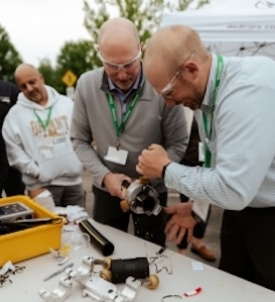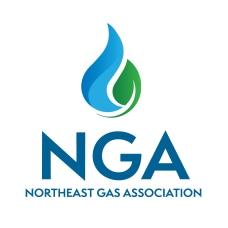PSMS Lessons Learned - March 2024 - Assessing Risk & Management of Change During Service Regulator Replacement
One of the best ways to enhance safety is to share and learn from our experiences. This is our periodic review of a lesson learned that has been anonymously posted in the Resource Center. To review or share a lesson learned sign up for the resources center today!
PSMS Lessons Learned — Assessing Risk & Management of Change During Service Regulator Replacement
As discussed in the recent PSMS Engagement Series Workshop, Practical Aspects of Management of Change, when considering replacement of in-kind of assets, it is imperative the component being considered to replace another meets the design specifications of the item it is replacing. This is particularly true of gas service regulators, where the supply capacity and relief capacity are essential considerations in assuring safe delivery pressure to a customer. Replacement regulators must meet engineering approval and any replacements considered must be approved in a company specific procedure. However, consumer application and service requirements also change. For example, a new end-use piece of equipment (pool heater, emergency generator etc.) may have changed the load requirements and a like-for-like replacement may not be appropriate.
Improperly sizing a gas system regulator during replacement would likely relate to the “Risk Management" element of API RP 1173, and during replacement / upgrade of an existing service regulator, Operational Controls associated with Management of Change. This is why it is important not to view API 1173 in “element silos” and to understand the interrelationship of elements that maximize safety and help minimize operational risk.
Description of Event:
A regulator set to deliver 7" W.C. to the customer failed during operation. This failure resulted in an over-pressurization of the customer's piping beyond the allowable operating pressure of 2 PSIG and caused a kitchen fire at the customer's location.
Root Cause(s) and Contributing Factor(s):
The regulator pin failed during operation, causing the customers downstream piping to become over-pressurized. Following an incident investigation, it was discovered the regulator was replaced with an improperly sized replacement, and when selected, there was no process to review the relief conditions of the regulator. When the regulator was sent to a third-party laboratory for review of the internal com-ponents, it was found that:
1) the regulator failed due to the loss of connection between the lever and the pusher post (when the pusher post pin fractured).
2) the fracture of the pusher post pin was caused by high cycle low load cyclic loading producing fatigue cracking.
Key Corrective Actions:
A company-wide notice was published following the incident to stop installation and remove all similar-type regulators from the system, due to the regulator possibly exceeding the allowable 2 PSIG outlet pressure. The company Regulator Replacement plan established a time frame in which all similar-type regulators be removed and replaced with alternative company approved regulators.
Key Lessons Learned:
The Operator initiated an enhanced review process to ensure service regulator capacity (service and relief capacity) meets the requirements of the end user as well as all stated requirements in company specific procedures. The engineering design risk assessment review process now includes consideration of high frequency cycling to preclude resulting premature deterioration of the regulator internal components.
Putting Pieces of the PSMS Puzzle Together:
Remember, to prevent dangerous gaps in our operations, we must constantly consider all the principles of PSMS.



